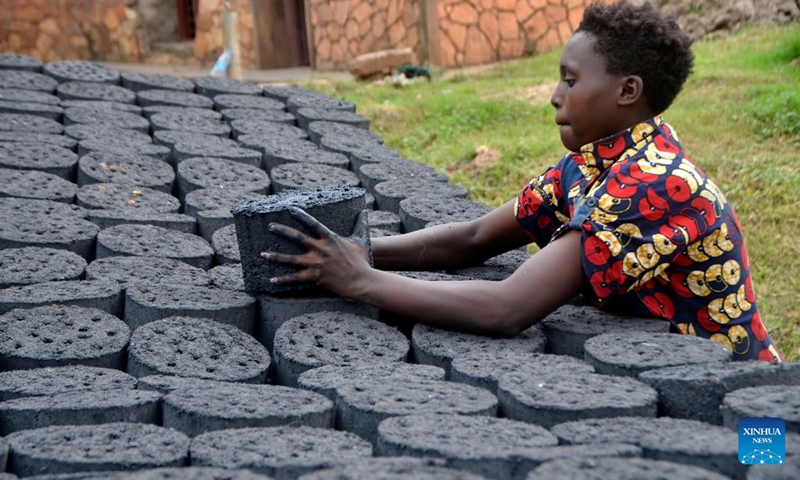By Mark Kawalya
Every morning in Kampala, Sheeba Kwagala and her colleague visit a facility to process agricultural waste, primarily banana peels and crop residue. They combine these materials with molasses and clay to create briquettes.
Briquettes are a form of renewable energy and solid biofuel, considered more efficient than traditional wood or charcoal, which are commonly used in Uganda. “We grind agricultural waste, mix it with clay and molasses to bind it, then use a machine to shape the briquettes. Making briquettes is straightforward, and I plan to teach other women,” said 20-year-old Kwagala.
Information from the Food and Agriculture Organization (FAO) shows that biomass is the predominant energy source in Uganda, constituting 94% of the total energy production. Within this, wood fuel makes up 80%, charcoal 10%, and crop residue 4%. Nine out of ten households, rely on either firewood or charcoal for cooking.
The FAO also highlights the extensive environmental, social, and economic consequences of charcoal production. There has been an increase in forest cover from 9% in 2015 to 13% in 2021. It is projected to rise to 15% by 2025. However, Uganda’s forest coverage plummeted from 25% in 1990 to about 9% in 2015. This is according to information from the National Forest Authority.
In recognition of World Environment Day on June 5th, Kwagala and the growing number of briquette producers in Uganda are making a significant impact. Through Set Her Free, a local NGO supporting vulnerable young women, they distribute briquettes to restaurants, schools, and other institutions moving away from wood and charcoal.
According to the World Bank, biomass briquettes can cut energy costs by 30-40% compared to traditional fuels, offering an economically viable alternative. Michael Kalyesubula, a chef in Kampala, shared his experiences.
“Using charcoal is not good for the environment. Switching to briquettes has made us realize their environmental benefits.” He noted that briquettes have reduced the restaurant’s fuel expenses. Previously, the restaurant spent 65,000 Ugandan shillings (around 17 USD) daily on charcoal, but now only spends 12,000 shillings on briquettes to cook for approximately 165 people.
Robert Agaba, program head at Set Her Free, observed that institutions with high wood and charcoal usage, like schools and hotels, are increasingly adopting briquettes as the costs of wood and charcoal rise due to deforestation. “Briquettes help mitigate global warming. By utilizing agricultural waste, we conserve forests that would otherwise be destroyed,” he explained.








